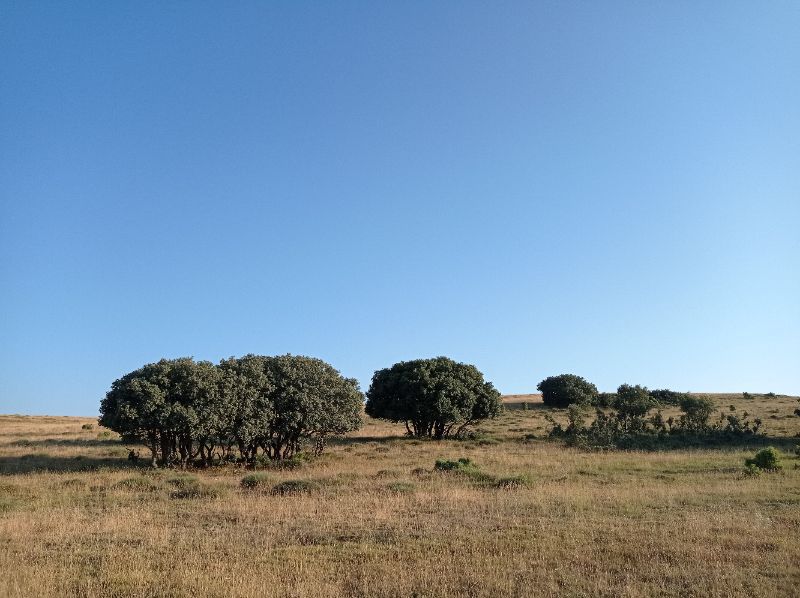
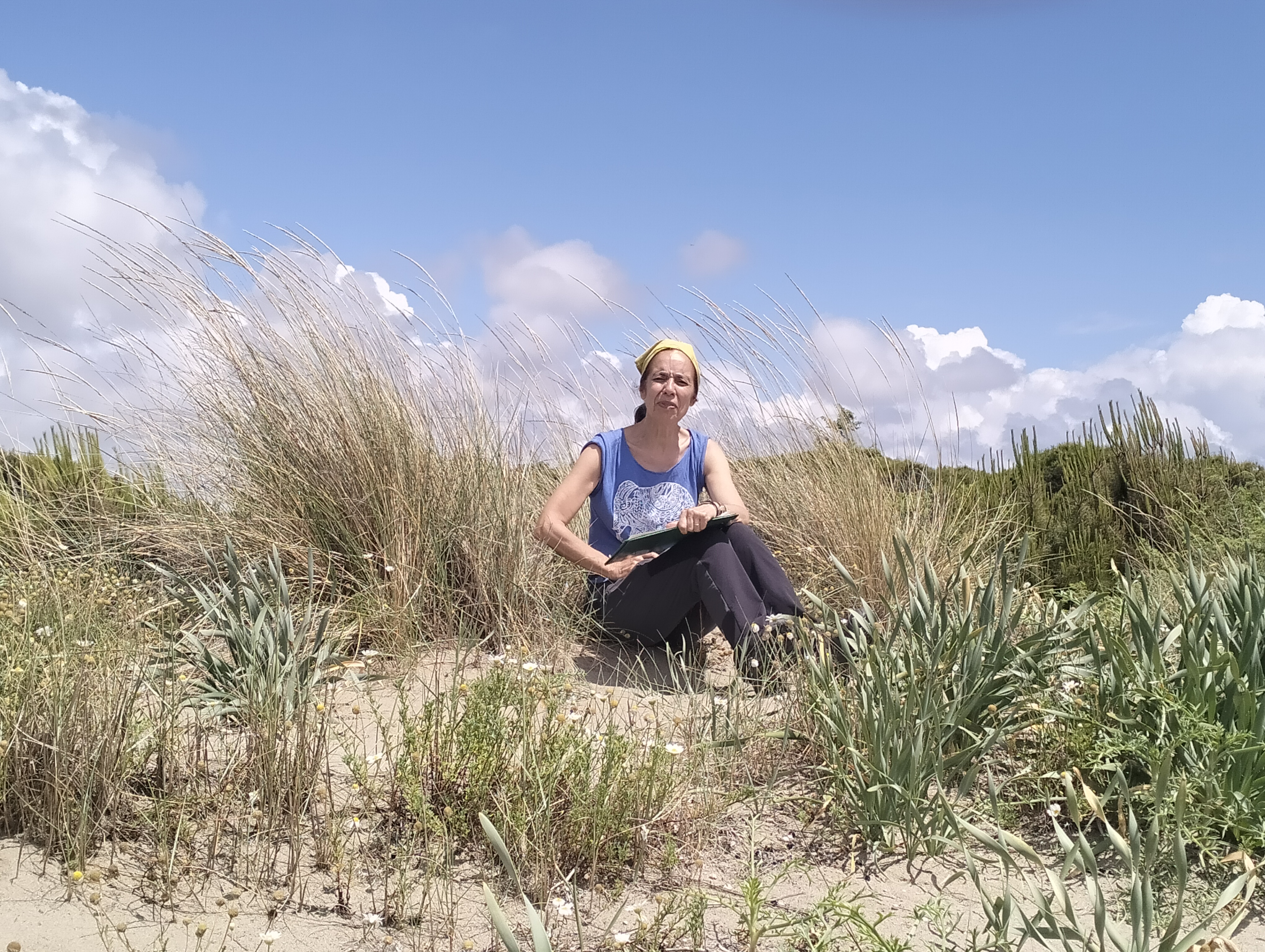
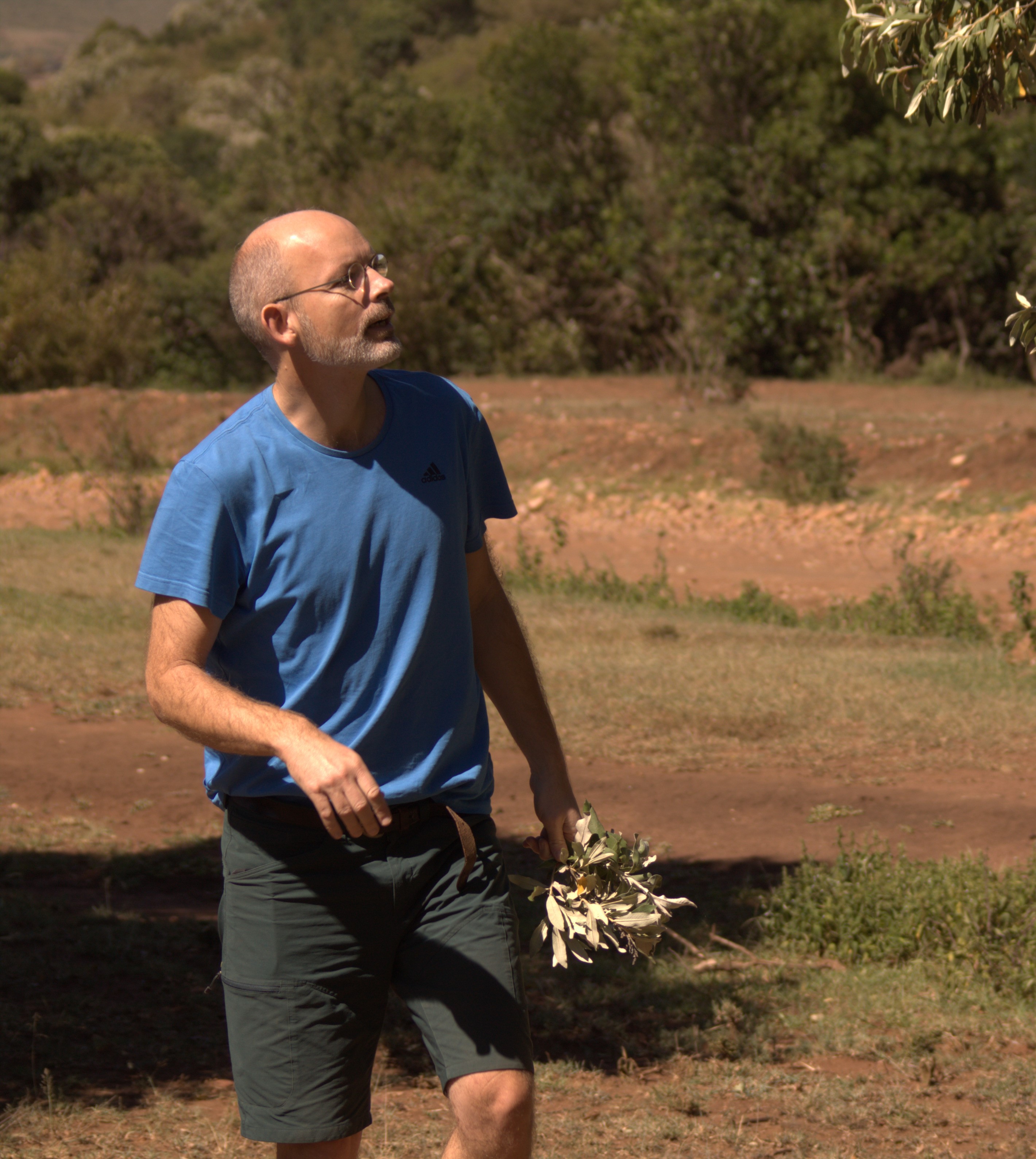
Photos of last winter's presenters: Santiago Soliveres Codina, Alicia Acosta and Jens-Christian Svenning.
Talk Grasslands!
We were unable to offer the series of Talk Grasslands webinars in the winter of 2024/2025. We aim to organize a series of talks again next winter. If you would like to suggest a potential speaker for the next series, then we will ba happy to receive your suggestions!
Please contact the organiser if you have any questions: Stephen Venn stephen.venn@biol.uni.lodz.pl
Previous talks
Winter 2023-2024
- Biodiversity-functioning relationships in grasslands and elsewhere, by Santiago Soliveres Codina.
Tuesday 16th January 2024, 14:00 (CET). The recording of this talk is available here.
- Mediterranean coastal dunes: threats and trends, by Alicia Acosta.
Tuesday 6th February 2024, 14:00 (CET). The recording of this talk is available here.
- Natural Vegetation Structure, Herbivore Influence, and Trophic Rewilding: Insights from Last Interglacial to Anthropocene Perspectives, by Jens-Christian Svenning.
Tuesday 12th March 2024, 14:00 (CET). The recording of this talk is available here.
Winter 2022-2023
- Conservation and Management of Alpine Grasslands Based on Long-term Field Observations across North Tibet, by Jianshuang Wu. The recording of his talk is available here
Friday 27th January 2023, 09:00 (CET)
- Flower-insect interactions in mountain ecosystems, by Elena Eustacchio & Marco Bonelli. The recording of their talk is available here
Friday 24th February 2023, 10:30 (CET)
- Ancient grasslands – land use legacies, by Sara Cousins
Friday 17th March 2023, 10:30 (CET)
Winter 2021-2022
The second season of EDGG Talk Grasslands presentations is about to commence. Again we have a line-up of distinguished grassland scientists, working with very different aspects of grassland science.
- Driving factors of long-term vegetation changes in grasslands by Martin Diekmann. The recording of his talk is available here.
23rd November 2021 14:00 (CET)
- Linking plants and pollinators: a story of local disturbance events and anthropized landscapes by Paolo Biella. The recording of his talk is available here.
14th December 2021 14:00 (CET)
- Grasslands: the hidden part by Jitka Klimešová The recording of her talk is available here.
11th January 2022 14:00 (CET)
Winter 2020-2021
EDGG organized online talks to offer grassland researchers an opportunity to be engaged in the latest grassland research and conservation studies, exchange ideas and hear inspiring talks. In 2020-2021 winter, we had three talks and welcome three distinguished scientists to talk on different aspects of grassland ecology, biodiversity and conservation:
- Drivers of insect decline in grasslands: mechanisms and solutions by Nadja Simons, 8 December 2020 Tuesday 14.00 (CET) The recording of her talk is available here.
- Recent developments of the EUNIS classification of European habitats By Milan Chytrý, 12 January 2021 Tuesday 14:00 (CET) The recording of his talk is available here.
- Grasslands: ancient and modern by Honor C Prentice, 4 February 2021 Thursday 14.00 (CET) The recording of her talk is available here.
Biodiversity-functioning relationships in grasslands and elsewhere
by Santiago Soliveres Codina, Tuesday 16th January 2024
Most of the research on the positive relationships between high levels of biodiversity and higher levels of the services an ecosystem provides to humans comes from grasslands, and it has provided strong research support to the need for conserving our biodiversity if we want to preserve our well-being. Despite this research effort, there are still exciting and important questions to be solved, such as how well do these biodiversity-functioning relationships extend to other ecosystem-types, or what is the relative importance of this local biodiversity changes regarding other biotic alterations occurring at larger (landscape scales). In addition, climatic conditions are changing even more rapidly than expected, and to better understand how can we enhance the resilience of our grasslands to such changes is pivotal to maintain these key ecosystems. To aid advancing our knowledge in these pressing issues and (hopefully) inspire further research in the EDGG community, I will present recent work focusing both on temperate grasslands and in Mediterranean ecosystems.

Santiago Soliveres Codina is leader of the CODINA LAB COmmunity assembly, biological DIversity and multifuncioNAlity in a global change context at the University of Alicante. He has a range of interests in community ecology from diversity-ecosystem functioning relationships, the effect of grazing pressure, climate or land use on plant diversity, shrub encroachment, restoration of roadsides and mine sites, or the ecology of biological soil crusts. However, most of my research so far has focused on plant-plant interactions, their biotic and abiotic drivers, and their consequences for plant community assembly.
Mediterranean coastal dunes: threats and trends
by Alicia Acosta, Tuesday 6th February 2024
Coastal dune systems, positioned at the interface between terrestrial and marine ecosystems, are characterized by strong environmental gradients which determine the coexistence of various plant communities within a relatively confined space. Despite hosting numerous habitats of interest for European conservation goals, coastal dune ecosystems have undergone to consistent transformations, ranking them among the most endangered habitats in Europe today. This talk will delve into the major plant communities found in Mediterranean coastal dunes, emphasizing their ecological value in terms of biodiversity. Furthermore, it will explore changes over the last few decades, emphasizing significant threats, including the impact of alien species.
Alicia T. R. Acosta obtained her degrees in Argentina before moving to Italy where she have been employed since 1992, currently as full professor at the University of Rome Tre. She is a plant ecologist with a wide range of interests, spanning from biodiversity conservation to biological invasions. Throughout the last two decades, her research has predominantly focused on coastal dune vegetation. She was not only interested to describe these endangered ecosystems but also to understand their trends and functioning and how they respond to environmental changes and human-mediated drivers. In recent years, she renewed her interest in the vegetation of central Argentina, which is also facing significant threats.
Natural Vegetation Structure, Herbivore Influence, and Trophic Rewilding: Insights from Last Interglacial to Anthropocene Perspectives
by Jens-Christian Svenning Tuesday 12th March 2024
In this presentation, I delve into the Quaternary vegetation structure of temperate European landscapes, with a specific focus on the Last Interglacial period, and discuss its implications for nature management in the Anthropocene. Addressing the enduring discourse on the nature of the temperate forest biome, I challenge conventional perspectives that depict it as uniformly covered by dense forest. Employing the REVEALS method on 96 Last Interglacial pollen records, a new study elucidates that light woodland and open vegetation exceeded 50% landscape cover, revealing high levels of historical heterogeneity that must have been driven by natural disturbance regimes, likely particularly the formerly rich and abundant large-herbivore fauna. A comprehensive analysis of beetle fossils from the Last Interglacial in Great Britain provides further quantitative evidence that highly abundant large herbivores co-occurred alongside a diverse and structured vegetation landscape. Subsequently, I explore the ramifications for nature management, underscoring both theoretical and practical empirical support for trophic rewilding—an ecological restoration strategy designed to reinstate top-down trophic interactions and cascades, with emphasis on restoring diverse and abundant large-herbivore faunas. Within this framework, I discuss the overarching ecological mechanisms activated by trophic rewilding and their potential to enhance biodiversity, even within the context of the emerging novel ecosystems of the Anthropocene.
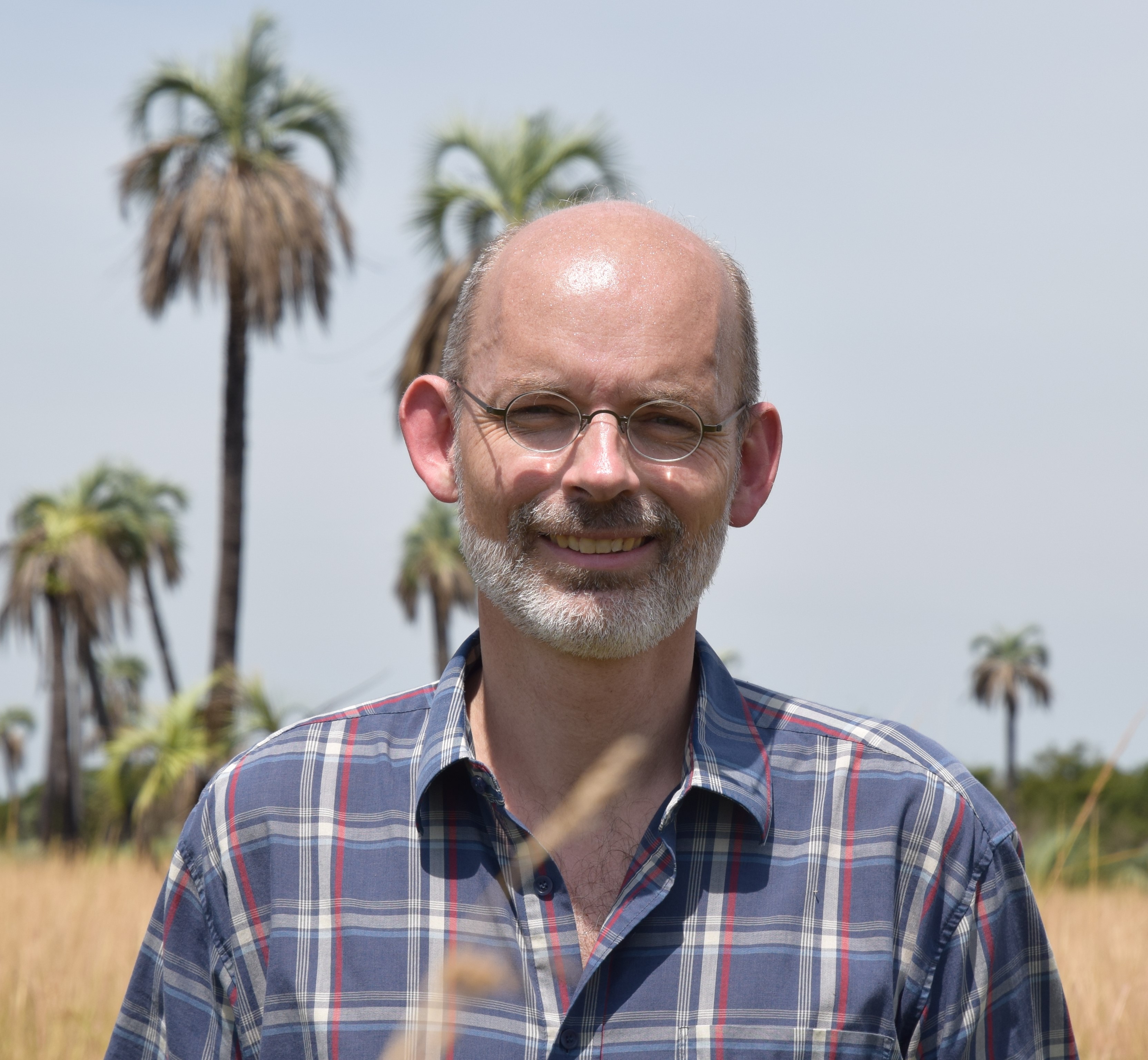
Jens-Christian Svenning is a macroecologist and biogeographer, with strong interest in plants, animals and people across the world. Alongside basic curiosity about nature, Jens-Christian Svenning is highly motivated to contribute to help overcome the climate and biodiversity crises and promote sustainable societal development. His research includes strong foci on fundamental drivers of biodiversity, climate change impacts on biodiversity and ecosystems, human-nature interactions from the past to the future, and the rising emergence of novel ecosystems, with strong interest in fundamental issues such as disequilibrium dynamics and top-down trophic effects. Key applied research foci include predictive modelling, the application of informatics and space-borne and other remote sensing technology to ecological and sustainability research, human dependence on and benefits from nature, and rewilding as a promising approach to ecosystem restoration.
Drivers of insect decline in grasslands: mechanisms and solutions
By Nadja Simons (08 December 2020)
Insects are the most diverse animal group on the planet, can be found in all ecosystems, and play a major role in almost all ecosystem process. Despite their importance for healthy ecosystems and many ecosystem services, their numbers and diversity is declining rapidly and to worrying extend. In this talk, Nadja guided us to take a closer look at the insect (and spider) communities on managed grasslands in Germany. She highlighted the current trend of insect diversity, discussed the effect of management type and intensity on insect diversity as well as the underlying mechanisms. Moreover, she provided insights into possible solutions for biodiversity-friendly grassland management.

Nadja Simons is a brilliant young researcher working on the interactions between land use, biodiversity and ecosystem functioning. Her special focus is arthropods. She is interested in how management decisions affect the functional diversity of arthropod communities at different spatial and temporal scales and how those translate to changes in the provisioning of ecosystem functions. Her work contributes to the development of grassland management that minimises conflicts between production and conservation both on individual grasslands and at the landscape scale. Since December 2018 she is a postdoctoral researcher at Ecological Networks Lab of the Technical University of Darmstadt. https://www.econetlab.net/nadja-simons
Recent developments of the EUNIS classification of European habitats
By Milan Chytrý (12 Jan 2021)
The EUNIS Habitat Classification, managed by the European Environment Agency, is a widely used reference framework for natural, semi-natural and man-made habitat types in Europe. Recently, this classification was extensively revised and updated. One of the main problems of the earlier EUNIS versions was the lack of clear definitions of individual habitat types that would enable a reliable assignment of each site to a habitat type.
Therefore, an expert group including MilanChytrý from the IAVS Working Group European Vegetation Survey has been working since 2012 for the European Environment Agency on improvements of EUNIS. They proposed more meaningful concepts of many habitat types, developed their unequivocal definitions and delivered characteristics of individual habitat types based on reliable data. They developed the expert system called EUNIS-ESy for automatic classification of European vegetation plots to EUNIS habitats. They have used this expert system to classify approximately 1.3 million vegetation plots from the European Vegetation Archive. Then they used these plots to produce statistically derived characteristic species combinations and distribution maps for more than 200 EUNIS habitat types. In his presentation, Milan Chytrý summarized the main features of the revised EUNIS classification and demonstrate how to use the EUNIS-ESy expert system. See also https://vegsciblog.org/2020/08/21/filling-empty-boxes-european-habitat-classification-eunis/.
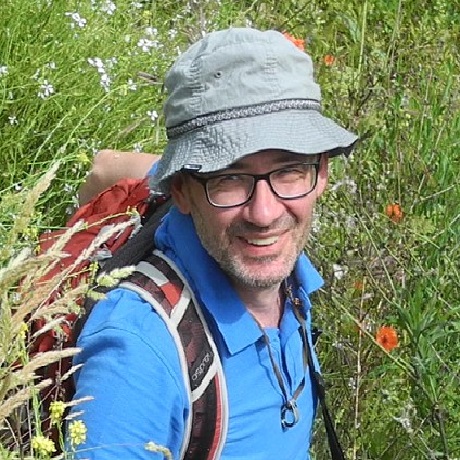
Milan Chytrý is one of the leading plant community ecologists of Europe. He is interested in vegetation survey and classification, vegetation-plot databases, broad-scale patterns of plant species diversity, palaeoecology, plant invasions and habitat conservation. His work spans across Palearctic region. He is a chief editor of the Journal of Vegetation Science and Applied Vegetation Science, a Secretary of the IAVS Working Group European Vegetation Survey, and a coordinator of the European Vegetation Archive. More information can be found on his webpage: https://www.sci.muni.cz/botany/chytry/
Ancient and modern grasslands: plant communities as bioassays
By Honor C Prentice
04 February 2021 Thursday 14.00 (CET)
In her talk, Honor showed different ways in which plant community composition can be used as a tool to investigate ecological and population-genetic questions. She gave examples from the grasslands and “alvar” heaths on the Great Alvar of Öland where her team characterized the ages of the grassland fragments (using historical maps, aerial photos and satellite scenes) and explored different aspects of plant community assembly as well as the historical and edaphic factors that are associated with the occurrence of individual species.
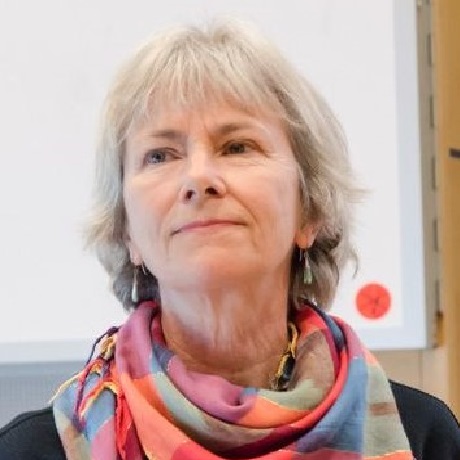
Much of Honor’s research on grassland ecology and plant population genetics is carried out on the Baltic island of Öland. She is interested in the mechanisms that shape and maintain patterns of variation and levels of biodiversity – both within species and within plant communities, and on different spatial scales. One thread of her ongoing research includes genetic and genomic studies of fine-scale local adaptation in Festuca ovina. Another thread has a focus on processes of community assembly and on species’ habitat-preferences within long-term arable-to-pasture successions. Honor is passionate about the wonderful complexity of grassland communities and about the need to conserve grassland ecosystems. More information can be found at https://portal.research.lu.se/portal/en/persons/honor-c-prentice(610306d8-3fb1-4409-8c66-937c9dea5378).html#Overview
